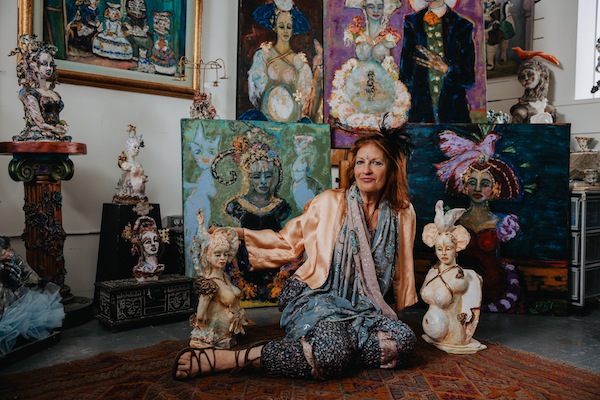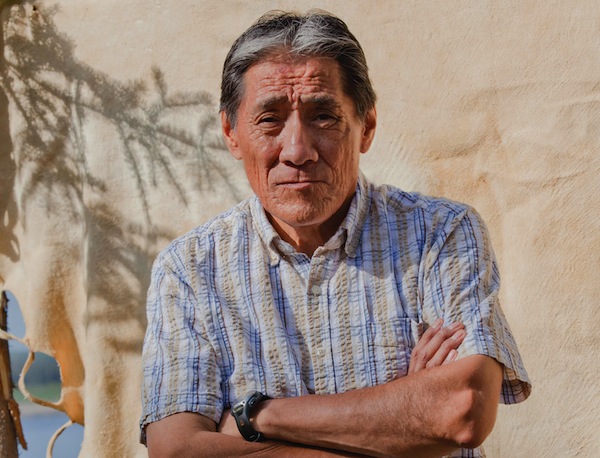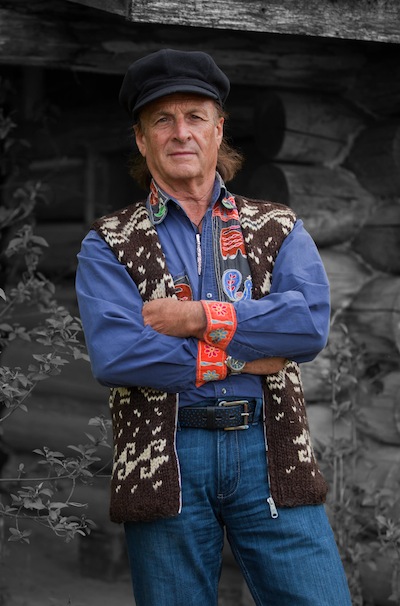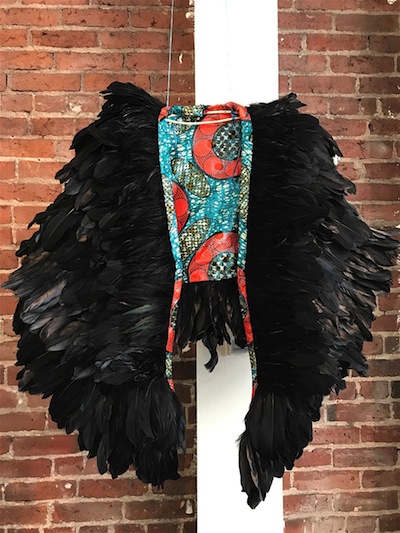Suzy Birstein in her studio, with works featured in her solo exhibit Tsipora, now at the Zack Gallery. (photo from Suzy Birstein)
Suzy Birstein’s Hebrew name – Tsipora – means bird. The artist’s new show, Tsipora: A Place to Land, which opened at the Zack Gallery on May 20, expatiates on her name’s meaning and its connection to the winged creatures of the sky.
“I love feeling like an exotic bird,” Birstein told the Independent. “I like bringing colour and joy to the people who visit my shows.”
Birstein’s art is bursting with bright hues and glitter. Both her sculptures and her paintings seem to aspire to one purpose only: to instil gladness in people’s hearts, which feels especially important during COVID and all its associated hardships and anxieties.
“The show’s idea was born out of a personal tragedy,” said Birstein. “A few years ago, one of my close friends passed away. I grieved but I knew I didn’t really lose her. She stayed right there, always with me, like a bird on my shoulder, and I thought: what a wonderful concept. I decided to create a series of sculptures of women, with birds incorporated into the whole in different ways.”
Almost every sculpture in the show has a bird. Sometimes, it is a tiny golden bird peeking from behind a woman’s shoulder or hiding in her skirt. Sometimes, it is an elaborate hair ornament. And, sometimes, it is implied rather than shown. But the idea of a bird is always there.
“When I started this series in 2017, my thoughts were all about freedom and travels – flying like a bird,” Birstein said. “I’ve always liked to travel and visited many countries: Europe, Asia, Mexico. I like seeing something new every day.”
Accordingly, the first few sculptures of her new series were reminiscent of her travels, their dark texture a reference to the ancient sacred sites she had visited. Their diaphanous tutus a playful metaphor of dance and flight, a symbol of the weightless grace of a ballerina.
“In 2020, I was planning to travel to the south of France, with a show scheduled in Cannes, when the pandemic hit, and all travel stopped,” Birstein said. After that, the focus of her art changed, becoming more home-oriented.
“Instead of flight, my sculptures became about nesting,” she said. “I couldn’t teach anymore because of the pandemic, didn’t teach for a year due to the school closures, so I took the opportunity and the time to indulge in self-exploration. I asked myself: what is beautiful? And my answer was: birth. And rebirth. Each sculpture I made during that time was of a pregnant woman. Not flights anymore but home and harmony.”
Many sculptures also have mirror fragments embedded in them, making them festive, shining. “The mirror shards help me bridge the inner world of a woman, her home and soul, with the outer world of traveling and flying,” Birstein said.
The show includes not only sculptures but several paintings as well. “The sculptures always come first,” she explained. “They are inspirations for my paintings. After a sculpture is ready, I sometimes paint it: like another version of the sculpture, an exploration of a unique perspective. It is a different experience – working on a flat surface with no fear of breaking the fragile pottery. I don’t use a brush. I paint with a tiny palette and my fingers. It feels almost like working with liquid clay.”
Clay was the medium that catapulted her into the art world, and she feels a deep affinity for it.
“When I was a child,” she recalled, “I couldn’t draw realistically. I thought I couldn’t be an artist. I danced and I modeled for artists. I was about 22 when I started working as an artist model full-time for an art school in Toronto. The administration of the school offered me any art classes I wanted for free, and I decided to try pottery. Clay spoke to me. I also took up weaving and fibre art and liked it. Later, when we moved to Vancouver because of my husband’s work, I wanted to take more art classes. There was no fibre art school at the time, but I enrolled in Emily Carr as a sculptor. They accepted me on the basis of my portfolio – the pieces I created in Toronto.”
Birstein uses white clay for her pieces and paints them before she fires them. “Sometimes, this process has several iterations,” she mused. “I paint the sculpture. Then I fire it, but firing is unpredictable. Colours might burn out or melt into each other in unexpected ways. Then I paint the piece again, maybe add some elements. Fire again. Some pieces take five or six times in the kiln before I know they are ready, but I don’t do perfect. I make mistakes sometimes and then play with my mistakes. I love quirkiness and imperfections.”
It helps that she owns her own kiln. “My kiln is in my basement,” she said. “It was a wedding present from my parents. They knew pottery made me happy.”
It is significant that the most important tool of her art was a gift to celebrate her family.
“I feel free like a bird in my art, but only because I have such strong support from my husband,” said Birstein. “I have stability in my life, a safe place to return, a secure home, and that allows me my freedom of artistic flight.”
That’s why the only image in the show with a man in it is her husband’s portrait.
“I was looking at all those sculptures and paintings of pregnant women in this series and thought: who made them pregnant? There must have been a man,” she said.
“It depicts my husband and my art,” said Birstein of the portrait painting, which features a man standing beside a sculpture of a pregnant woman.
The show Tsipora runs until June 27. In addition to being able to book a walk-through of the exhibit with the gallery, people can arrange a personalized tour with the artist via her website, suzybirstein.com, or by calling her at 778-877-7943.
Olga Livshin is a Vancouver freelance writer. She can be reached at [email protected].




